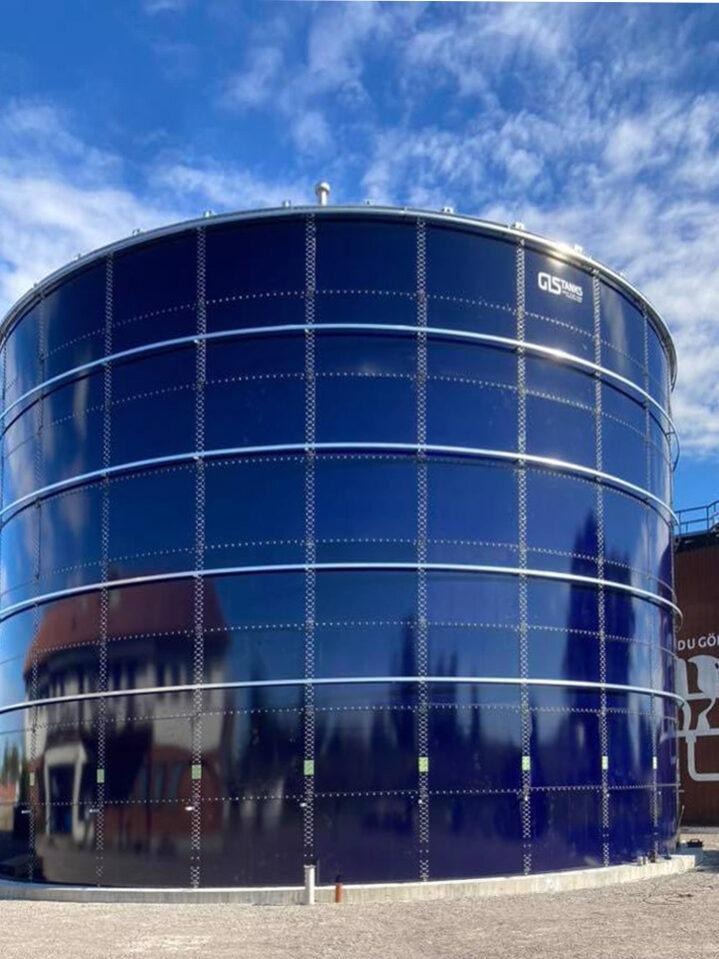Tekniska verken in Linköping Sweden, is building a gas-tight slurry pit. This is an important climate measure, as the current open storage emits the powerful greenhouse gas methane. FVB is involved in several parts of the project, including the feasibility study and project management for part of the process.
 Tekniska verken in Linköping Sweden, is building a gas-tight slurry pit, FVB is involved in several parts of the project. Image Credit: FVB
Tekniska verken in Linköping Sweden, is building a gas-tight slurry pit, FVB is involved in several parts of the project. Image Credit: FVB
Tekniska verken has extensive experience with biogas. As early as 20 years ago, they formed a biogas company – Linköping Biogas – together with Swedish Meat and LRF. At the time, Linköping had poor air quality in the city center due to traffic and the slaughterhouse industry also had problems handling its residual products. The solution was to produce biogas from the slaughterhouses’ residual products. The biogas became fuel for the city busses, and it was also possible to deliver high quality fertilizer for agriculture.
Today, the business is wholly owned by Tekniska verken, and they are responsible for the production, sale, and distribution of biogas. The biogas plant is on the outskirts of Linköping and consists of pretreatment tanks, reception tanks for liquid materials, digesters, an upgrading plant, and a storage well. In the open storage well, methane leaks into the air and, because methane is a powerful greenhouse gas, it is important to eliminate these emissions.
Several projects will be implemented to renovate the biogas plant, but the biggest measure is to build the closed slurry pit that will be adjacent to the existing area.
“This is an important climate measure and we have also received a grant from Klimatklivet to be able to implement the investment,” says Andreas Johansson, Project Manager at Tekniska verken.
The new 6,000-cubic-meter slurry pit will be put into operation by the end of the year. It is estimated to cost approximately 25 million SEK, of which 11 million SEK comes from Klimatklivet, which provides funding for local investments that have major climate benefits.
FVB produced an updated feasibility study
The discussions around making this investment started several years ago, and when Tekniska verken needed an updated feasibility study, the assignment was given to FVB. The feasibility study was completed last year and Tekniska verken decided to move forward with the closed slurry pit. FVB is designing the lines in the ground, which is a 200-meter-long gas line that will be connected to the existing gas system via a steel pipeline. FVB is also the project manager for part of the process contract.
“Hiring FVB for biogas projects is like using a Swiss Army knife – they solve everything through their broad knowledge and extensive technical know-how,” says Andreas Johansson.
Henrik Lindholm, one of FVB’s consultants involved in the project, finds it stimulating to work with a biogas project with such a clear climate benefit.
Important climate investment
“This is an important climate investment and that is the focus, but it will also lead to Tekniska verken being able to extract a little more biogas. The methane that spontaneously forms in the storage will be utilized, as it is currently done from the digesters,” Henrik Lindholm explains.
“In the subsequent steps of the process, the biogas is liquefied into liquid methane, LBG (Liquid BioGas), and we are seeing a growing interest in using liquid biogas in public transport and industry,” Henrik Lindholm continues.
One advantage of converting biogas from gas to liquid is that the volume is about 600 times smaller, which makes LBG easier to transport and store. It is also easy to incorporate into the existing gas infrastructure. In June 2020, Tekniska verken inaugurated its second filling station for liquid biogas and sales of fossil-free and locally produced liquid biogas have increased sharply since then.
“We have replaced all our compressed gas with gas in liquid form. Interest in LBG has completely exploded in the last six months and we are reaching new markets. It is especially exciting that this is a vehicle fuel that is locally produced and that our product’s climate emissions will soon be reduced,” says Andreas Johansson.